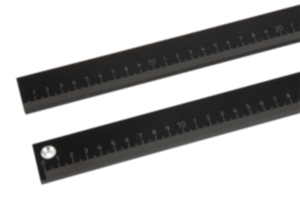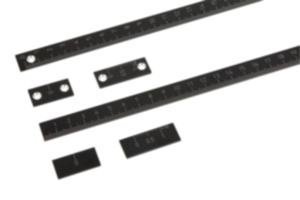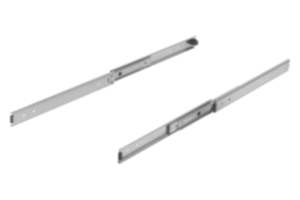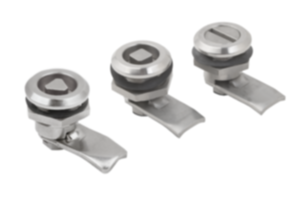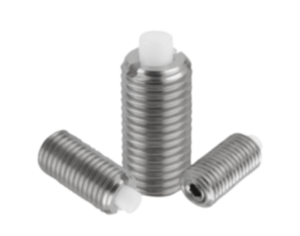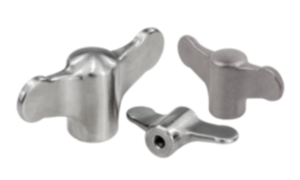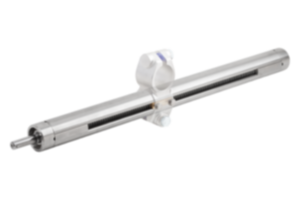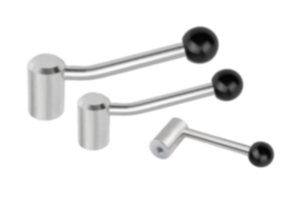Vice Clamping Technology
Machine vices by KIPP - Real classics
Machine vices are devices used in metalworking, carpentry and other craftsmanship applications. Their main purpose is to securely hold workpieces in place in order to carry out precise and controlled machining operations. Machine vices are available in various styles and sizes to meet the requirements of different applications.
Why are machine vices so important in metalworking and carpentry?
Different types of machine vices
Overview of different machine vices
Important criteria when selecting a machine vice
Machine vices and their uses
Tips for maintenance and care of machine vices
The perfect machine vice by KIPP
Why are machine vices so important in metalworking and carpentry?
Machine vices play a crucial role in metalworking and carpentry and are an indispensable tool in workshops and production facilities. Here are some reasons machine vices are of major importance in these industries:
- Machine vices allow for precise fixation of metal and wooden items during machining. This precise fixation is crucial for achieving exact dimensions and surface finishes.
- In metalworking and carpentry, workplace safety is of the utmost importance. A properly adjusted machine vice ensures that the workpieces are held securely during the machining process, minimising the risk of accidents and injuries.
- Metal working and carpentry often require the removal of large amounts of material, by milling, drilling or other machining processes. A machine vice offers a stable baseto ensure that workpieces remain rigidly held during these machining steps and that undesirable vibration or movement does not occur.
- A well-designed machine vice allows for workpieces to be clamped efficiently and to switch quickly between different machining operations. This increases productivity as less time is needed for manual adjustments.
- Machine vices are available in different styles, including 5-axis clamping systems, shaft clamps, wedge clamps, 3-axis clamping systems, and NC vices. This versatility allows for a wide range of workpieces in a variety of sizes and shapes to be machined.
The machine vice is therefore an indispensable tool for precise, safe and efficient machining processes in metalworking and carpentry. They make a significant contribution to manufacturing high-quality end products and streamlining work processes in workshops and production facilities.
Different types of machine vices
The various clamping systems by KIPP offer a range of features to meet the specific requirements of the manufacturing industry. From precise positioning to automated clamping technology, they allow for streamlining of machining processes and help to increase productivity and quality in production.
- 3-axis clamping systems: A 3-axis vice allows for workpieces to be worked from three spatial directions: along the X, Y and Z axes. This flexibility permits precise alignment for complex machining operations, as the workpiece can be accessed from different angles. 3-axis vices are particularly useful in CNC machining to realise complex shapes and contours with high precision.
- 5-axis clamping systems: A 5-axis vice goes one step further and enables workpieces to be accessed from five spatial directions. In addition to the X, Y and Z axis, it also enables access from the A and B axis. This freedom of access is particularly important for machining complex geometries and for use on 5-axis CNC machining centres
- NC vices: NC vices (numerically controlled vices) have revolutionised clamping technology through automation. In contrast to conventional clamping devices, an NC vice enables automated, precise and repeatable clamping of workpieces. By integration into CNC machines, NC vices can streamline clamping processes, resulting in greater efficiency and repeat accuracy. Some models also offer the option of clamping several workpieces in a single operation.
- Centric vices: A centric vice is characterised by its central clamping position, leading to even distribution of force on the workpiece. Both jaws move inwards or outwards simultaneously, centring the workpiece in the middle of the vice. A centric vice is well suited for large batch work on a milling machine.
- Multi-clamping systems: Multi-clamping systems allow for simultaneous clamping of several workpieces on one machining platform. This increases efficiency considerably, as several machining steps may be carried out at the same time. Such systems are ideal for mass production or for manufacturing environments where a high production rate is desired.
Overview of different machine vices
The category "vice technology" consists of six different product families. Some have already been mentioned above.
The product family"KIPPflexX 5-axis vice, 5-axis compact clamping system"includes 5-axis vices and a torque wrench as well as accessories such as:
- A clamping claw set
- different types of jaw plates
- A stop set
- seating ledges
- A cylinder clamping set
- baseplates
- extension shafts and adapter shafts
The product family"stationary chucks"should also be looked at more closely. It includes steel jaws; a stationary 3-jaw chuck and a stationary 4-jaw chuck.
The stationary three-jaw chuck is a specific type of clamping device used in metalworking and turning operations. This chuck has three jaws which are arranged radially and move simultaneously in and out to securely hold workpieces. Round, triangular or even hexagonal workpieces can be clamped.
The stationary four-jaw chuck is also used in metalworking. In contrast to a 4-lathe chuck, where the jaws are interchangeable, a stationary 4-jaw chuck is permanently mounted on the spindle of a lathe. It has four individually adjustable jaws that can be moved separately. For that reason square, octagonal as well as round workpieces may be clamped.
Important criteria when selecting a machine vice
The selection of a suitable machine vice is a crucial step in ensuring efficient and precise machining processes in metalworking or carpentry. Several important features should be taken into account when choosing a vice.
A high-quality machine vice is characterised by its ability to hold workpieces precisely. The precision of a vice is crucial for the quality of the machined parts and compliance with specified tolerances.
The choice of material is also crucial, as this influences durability. High-quality, sturdy materials ensure that the vice can withstand the stresses of daily use and guarantee a long service life . Often forgotten, but just as important, is the quality of the jaws. The jaws ensure that workpieces are held securely. Non-slip jaws with a good surface structure ensure secure grip, while special jaw designs enable optimum adjustment to different workpiece shapes.
The clamping force should also be taken into account. This should be sufficient to provide the required retaining force for different workpieces. A quick clamping system allows for time-saving and efficient operation by speeding up the clamping process.
Machine vices and their uses
Machine vices are widely used in different industries and play a crucial role in the machining of workpieces. Typical applications in various industrial sectors include:
Metalworking:
- A machine vice holds metal workpieces in place during milling, allowing for precise contours and shapes to be created.
- In turning operations, a vice provides for workpieces to be held securely in a lathe so that machining operations can be carried out.
- When drilling holes in metal parts, the vice provides stability and precision to ensure accurate drilling.
Carpentry:
- When cutting wood, the vice ensures that the workpiece is held securely, enabling precise cuts and forms.
- A vice is essential for planing and milling wooden workpieces in order to provide a stable platform for machining.
- The vice holds wooden workpieces securely during sanding work to achieve smooth surfaces.
Machine construction:
- When fitting assemblies and components, the vice helps to hold parts during the process.
- When repairing machines or appliances, the vice provides a secure mount for replacing or repairing defective parts.
Electronics industry:
- In electronics, a vice is used to stabilise circuit boards and electronic components during soldering or assembly.
- When working on housings or chassis of electronic devices, the vice ensures secure fixation during the work process.
These examples illustrate the versatile applications of machine vices in various industries. However, they are also used in other areas, such as construction.
Tips for maintenance and care of machine vices
The service life of a machine vice can be extended considerably through regular maintenance and careful handling.
Regularly clean the vice by removing dirt, swarf and other deposits. A clean working environment reduces wear and facilitates the movement of moving parts.
Regular lubrication of all moving parts, especially the threaded spindle and the guide rails, is crucial. Use high-quality lubricants to minimise friction and wear.
Protect the vice from corrosion, especially if it is used in a humid environment. Regular application of rust inhibitors or oils helps to extend the service life of the vice.
Use correct clamping force to suit the requirements of the machining process. Excessive clamping force can lead to premature wear of the jaws and other parts.
Avoid overloading the vice by machining workpieces that are within the capabilities recommended by the manufacturer. Excessive loads can lead to deformation or damage.
Protect the jaws from damage caused by hard or sharp workpieces. If necessary, soft protection materials can be used to protect the jaws.
Check the alignment of the vice regularly. Incorrect alignment can lead to uneven wear and impaired precision.
And above all! Please note maintenance and care instructions issued by the manufacturer. These specifications are tailored to the specific requirements and materials of the vice.
The perfect machine vice by KIPP
When choosing a machine vice, the brand is crucial!
KIPP stands for quality, precision and reliability.
Our expertise enables us to develop products that meet the highest standards. Our machine vices undergo strict quality controls to ensure that they meet the highest industrial standards. Precision and durability are our top priorities.
We pride ourselves on offering not only high-quality products, but also first-class customer service. If you have any questions or require assistance in selecting the perfect machine vice, our experts are happy to help. Opt for quality, precision and innovation.


